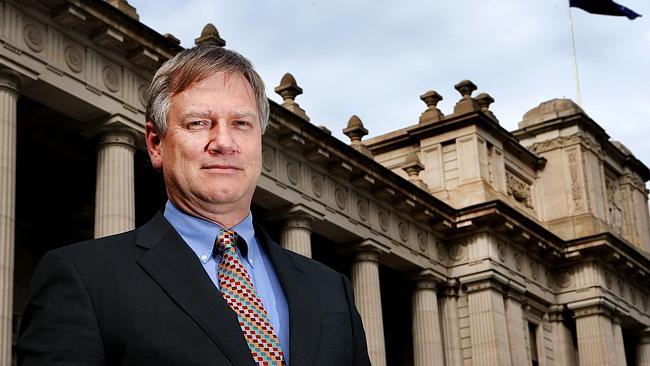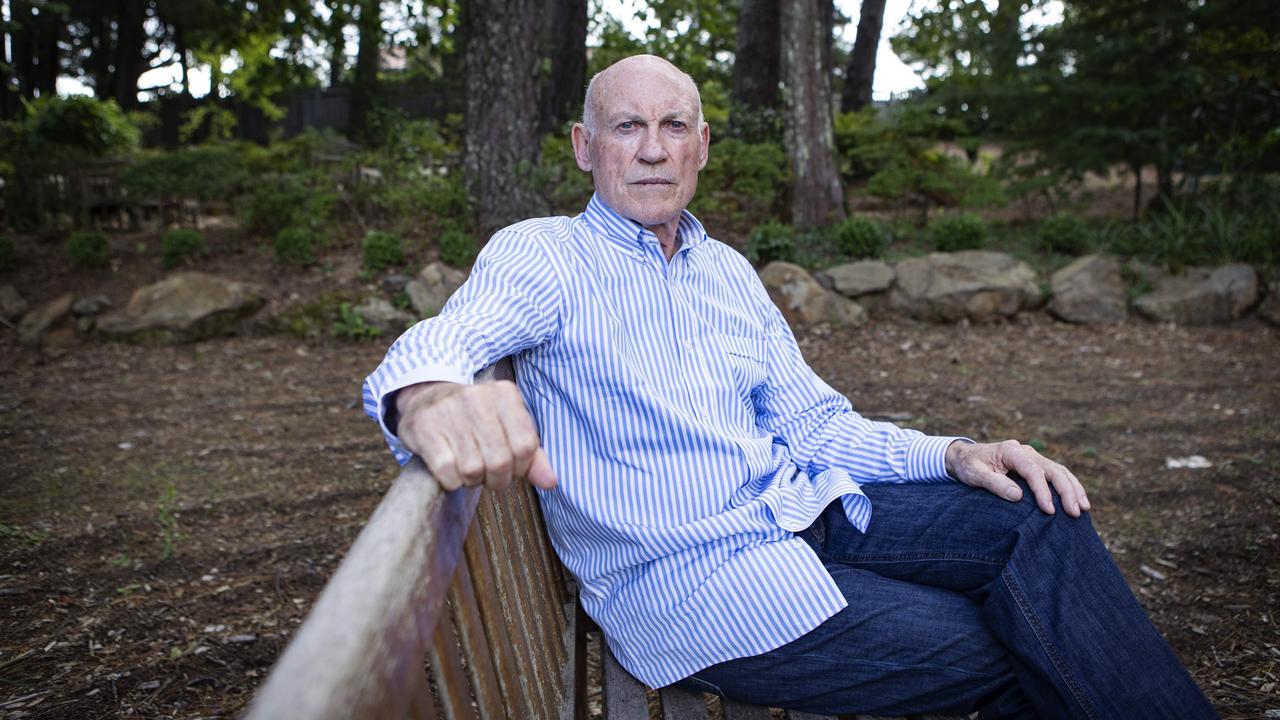Constitutional referendum: the indigenous recognition tightrope
An examination of the Andrew Bolt case against a constitutional referendum.

The debate over constitutional recognition of Aborigines has exposed the immense task confronting the proponents of this change: they are opposed by a school of thought that seeks to portray the entire project as racist and an open door for judicial activism.
This assessment, unless challenged and defeated, could derail the referendum on this question that is planned for 2017.
Mainstream opinion may strongly favour some form of indigenous recognition, but those on the other side of the argument include some of the most persuasive players in public-policy debates: News Corp Australia columnist Andrew Bolt and Liberal Democrat senator David Leyonhjelm.
Despite community goodwill, proponents of national recognition cannot afford complacency. Consensus has not yet been achieved on the details that will be put to the people and history shows division can be fatal.
History also shows Australians are cautious about changing the Constitution. Of the 44 referendums since Federation just eight have succeeded. But, of those, most passed easily.
Then there is Bolt — consistent, eloquent and one of the nation’s greatest persuaders. He believes the scheme that is starting to take shape would not just institutionalise divisions on the basis of race but give the Constitution an even stronger race provision.
His critique, no matter how well-intentioned, is flawed. It misconstrues the main elements of the proposals that are taking shape. His argument, outlined in some detail on his blog, suffers from so many errors of law and fact that it is hard to believe it is the work of the same man whose immense output across a range of media is consistently well-informed.
On this issue, he is also at odds with most of those on the conservative side of law and politics — including his friends Tony Abbott and constitutional lawyer Greg Craven.
Bolt believes a national declaration recognising indigenous Australians would be “too much of a surrender of a critical principle: that we should be treated as individuals under the law, with equal standing and common rights, and not as representatives of a ‘race’, each with a different standing and different rights”.
This is his starting point and it suffers from two problems. The first is that the proposal for national recognition of indigenous people is not based on their race. It is based on the reality that this diverse group of different peoples were the original possessors of this continent and its islands. The second problem is that special treatment to protect the rights and aspirations of minorities has always been possible under the Australian system of governance.
In this country, equal treatment and equal standing are important principles, but it has always been accepted that the ability to respect the legitimate aspirations of minorities is just as important. History shows we are capable of balancing those principles.
The great native title cases of Mabo and Wik accepted that, in certain circumstances, Aborigines and Torres Strait Islanders could be the beneficiaries of a system of land title that was not available to other Australians.
The struggle for native title was not won on the basis of race but because the law finally recognised reality: indigenous people were the original possessors of the land. This concept of indigeneity, not race, is also at the core of the argument in favour of a yes vote at the coming referendum.
The recognition of minorities dates back to the 1890s, when the less populous regions rightly feared their interests could be ignored in the new national parliament that was clearly going to be subjected to long-term domination by representatives from the big east coast states.
As part of the price of creating a nation, voters at the Federation referendums agreed to give all states the same number of senators, regardless of population. This explains why Tasmania’s 515,000 people are represented in Canberra by the same number of senators as the 7.5 million people in NSW.
The point here is that Bolt has based his opposition to indigenous recognition on a “critical principle” that, in its pure form, has never existed.
The coming referendum, among other things, will become the defining test for Australian conservatives.
According to The Australian’s Paul Kelly “their choice is whether to enhance the nation or play the destructive race card by insisting that constitutional recognition of the indigenous peoples is a racist act, an extreme claim so far unsubstantiated”.
It is idle to pretend Bolt’s influence among conservatives will not be important. “Bolt’s consistent position is calculated to sink this referendum on principle without engagement with the issues,” Kelly says. “His allies will be the radicals on the Left who will oppose it as tokenism.”
If Bolt is engaged on the detail, more holes appear in his argument.
He is wrong to assert that national recognition would mean creating a body he describes as a “race-based parliament” and a “supervisory parliament”. It won’t. None of the contending proposals for change go anywhere near such an idea.
Constitutional lawyer Anne Twomey, building on a proposal backed by Aboriginal leader Noel Pearson, has drafted a plan for an advisory body that would provide no services, enact no laws, administer no revenue and raise no taxes. It would have one duty: to provide advice on proposed laws that affect indigenous people. Parliament would be free to accept or ignore that advice.
This new body would “supervise” nothing. It would not even have control over its own composition, role, powers and procedures. The Twomey proposal would mean all those matters would be controlled by federal parliament, just as it controls the functions and make-up of other advisory bodies such as the Productivity Commission.
So what could be behind these exaggerations?
Aboriginal academic Marcia Langton believes Bolt’s approach suggests he is still hurting from his searing experience in the Federal Court, which found that a series of his articles about light-skinned Aborigines had breached section 18C of the Racial Discrimination Act. In the view of many, that ruling misapplied the law and demands statutory intervention.
Langton believes Bolt may not even be aware that the lingering impact of that case may have hampered his ability to reach an objective, impartial assessment of the plan for national recognition.
Like Pearson, Langton believes the root of the problem is that Bolt has perceived this as an issue about race and the risk of entrenching racism within the Constitution.
“All parties, it doesn’t matter which side of the argument they are on, all the parties that are in favour of recognition want to dispense with race from the Constitution because the issue of recognition has nothing to do with race,” Langton says. “It has to do with indigenous people being the first peoples.”
If Bolt is right, and national recognition of Australia’s first people is a retrograde move, what are we to make of the emphatic forms of recognition that have been extended to indigenous people in Scandinavia, New Zealand and the US state of Maine? Have these jurisdictions become racist hellholes that have lost the rule of law?
The compromise plan that is backed by Pearson would actually remove all references to race from the Constitution — including the race power in section 51 (xxvi) that gives the federal government the power to make laws for “the people of any race for whom it is deemed necessary to make special laws”. This would make race-based laws impossible.
Section 51 (xxvi) would be replaced with a new, narrower head of constitutional power that would make it possible to enact laws on indigenous affairs.
The Pearson compromise includes a national declaration recognising indigenous people that would be chosen after a national competition. It would be used at civic occasions and would not form part of the Constitution.
The intention behind having a declaration outside the Constitution is to accede to concerns that a declaration inside the Constitution may be used to strike down laws on indigenous affairs.
The third element of the compromise is the establishment of the advisory body, by a new provision in the Constitution.
Bolt takes great exception to the proposal to replace section 51 (xxvi) — the race power — with a narrow “indigenous” power. He describes this as “a mere switcheroo” that would “remove the power to make race-based laws, only to replace them with the right to make race-based laws”.
Julian Leeser, who helped draw up the proposal backed by Pearson, points to the practical, legal reason it is essential to have this replacement head of power. Once the race power in section 51 (xxvi) is removed, it becomes essential to provide a constitutional basis for federal laws on Aboriginal affairs.
“You have to replace it with something because otherwise the commonwealth has no power to do anything to adjust the Native Title Act,” says Leeser.
“People who run this argument about ‘race’ are very much in favour of seeing indigenous people use native title rights and indigenous property rights. They will not be able to use them unless you replace the race power with an Aboriginal and Torres Strait people power.
“If you want to get rid of the racist provisions in the Constitution, you have to replace them with a provision that relates to Aboriginal and Torres Strait people.”
One of the unresolved debates is whether the replacement head of power should refer to Aboriginal and Torres Strait Islander people, or whether the scope of the new power should be limited to functions such as the power to make laws on indigenous heritage, culture, land relationships and language.
ABC chairman Jim Spigelman, a former chief justice of NSW, is not in favour of a “people-based” head of power.
“Parliament should only have functional powers, not powers to do whatever they want about groups of people,” Spigelman says.
Both options seek to ensure parliament can continue to make laws on indigenous affairs. Can that be considered racist?
Constitutional lawyer Craven says the problem with the Bolt position is that it overlooks the goal behind the Pearson compromise, which is to draw together all three strands of Australian society: those who trace their origins to the original inhabitants of the continent, those whose forebears helped found the modern nation, and the great waves of migrants.
“Pearson’s thesis is that the different strands that run through Australian culture actually belong to everybody. Pearson’s thesis is that if we play this properly, we can all share in all three,” says Craven who is vice-chancellor of the Australian Catholic University.
“What’s wrong with Andrew’s thesis is he see this as a way, in a sense, of making non-Aboriginal Australians less Australian. I think it is a way of making all Australians more Australian,” he says.
“I don’t think this is divisive, I think it is inclusive. If, as a country, we came to the point where the whole of our history — European, British and indigenous — was owned by everybody, that would be a magnificent day.”
Craven, who considers himself to be a constitutional conservative, has little time for the argument that a non-constitutional declaration of recognition would lead to challenges in the High Court: “That’s rubbish.”
He has the same view about fears that an advisory body, inside the Constitution, would lead to litigation: “That’s rubbish too. This body would simply give advice which could be taken or ignored. There are dozens of bodies that have that type of role.”
Even if the debate proceeds on Bolt’s favoured terms of race and racism, his standing as an authority on this subject has been questioned.
“When I think about advocates for non-racism in this country, or addressing racism, Andrew Bolt is not the one who comes to mind,” says Mick Gooda, who is Aboriginal and Torres Strait Islander Social Justice Commissioner. “He is not the poster boy for non-racism.”
Legal academic Sean Brennan believes it can hardly be racist to take steps to undo the adverse impact of the entrenched racism of the past. “I strongly disagree with the suggestion that it is racist or racially divisive to recognise Aboriginal and Torres Strait Islander people in the Constitution,” says Brennan, who is director of the Gilbert + Tobin Centre of Public Law at the University of NSW.
“In terms of history, the land was taken without consent or treaty. And the authority of Aboriginal groups to determine their own futures, as they had for thousands of years before the British arrived, was overridden.
“That is a massive process of dispossession and disempowerment. It creates a legacy of deep inequality. Racism — the deliberate disregard for the value of a human society on the basis of assumed racial superiority — helps explain that history.
“Undoing racism today includes accurately acknowledging the true state of affairs and restoring the first peoples of the continent — its first landholders, its first legally regulated societies — to a constitutional position that more accurately reflects their status in Australian society and history,” says Brennan.
Bolt’s argument glosses over the fact adverse special treatment of indigenous Australians was institutionalised at the time of Federation. The Constitution that was approved by the people made no attempt to stop the new state governments from preventing people voting because of their race.
It merely made sure this practice was considered when establishing the number of voters in federal electorates. It accepted and regulated racism.
If it was meant to be an incentive for states to enfranchise indigenous people, it did not work. Queensland did not permit Aborigines to vote until 1965, three years after they won the right to vote at federal elections.
The question now is whether 2017 will mark the next stage in the nation’s evolution. Will we continue to retreat from the racist injustice of 1901?
At the time of Federation, when Australia sidelined its indigenous people, New Zealand had been heading in the other direction for generations. From 1867, dedicated seats in parliament had been set aside for the Maori people.
None of the mainstream proposals for national recognition go that far. But the experience of New Zealand and other jurisdictions shows indigenous recognition does not threaten democracy.
New Zealand’s reserved seats, along with the 1840 Treaty of Waitangi between Britain and Maori chiefs, have become tangible evidence of the unique nature of the New Zealand polity.
“They have come to be seen as a means of recognition and continued good faith in the terms of the treaty,” says a research paper prepared in 2008 for the Australian Parliamentary Library.
In the US state of Maine, the indigenous Penobscot people started sending representatives to the state parliament in 1823. The arrangement was formalised in 1866 with a guaranteed seat for a tribal representative who was granted restricted powers. This was extended in 1927 to include another indigenous tribe, the Passamaquoddy.
Beginning in 1972, Finland, Norway and Sweden all created separate parliaments for their indigenous Sami people, formerly known as Lapps. All three Sami parliaments are empowered to provide advice on indigenous affairs but Sweden has also given its Sami parliament — the Sameting — the authority to appoint school boards, participate in planning decisions and allocate some funds for public purposes.
Like Australia, all these jurisdictions have accepted it is legitimate to balance the conflicting principles of respecting minorities while ensuring equal treatment under the law. But unlike Australia, they have ensured their governance structures reflect their own unique circumstances.
Bolt’s argument against the Pearson compromise is well meant. But he is defending a model of government that, in its pure form, has never existed in Australia and has not existed in New Zealand for 148 years.
The last word should go to prominent lawyer Mark Leibler, who was co-chairman of the expert panel whose 2012 proposal has been substantially changed by the Pearson compromise. Leibler says the beauty of the Pearson compromise is the fact it does not leave the door open for judicial reinterpretation.
“Noel Pearson, the way he has come up with this is quite brilliant thinking,” Leibler says. “He has formed the view, with some justification, that to get bipartisan support for a prohibition on racial discrimination in the Constitution would be very difficult because it puts the issue fairly and squarely in the hands of the courts.
“The beauty of his proposal is that it gives Aboriginal Australia something really substantive for the first time, to have an opportunity to consult and have input when parliament wants to pass laws affecting Aboriginal and Torres Strait Islanders.
“That is something that does not in any way give the court any rights to intervene.
“It is not something that in any way interferes with the sovereignty of parliament because, at the end of the day, after consultation, it is the parliament that makes the decision.”



